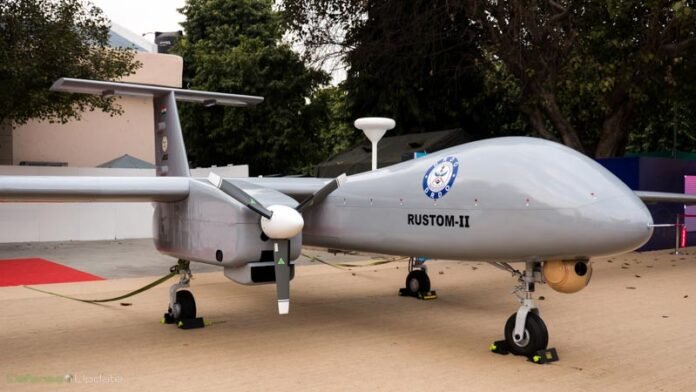India’s decision to acquire ‘hunter-killer’ Predator drones marks a significant step forward in bolstering its defense capabilities. These unmanned aerial vehicles (UAVs) are renowned for their lethal precision and versatility, making them valuable assets in modern warfare.
One of the key strengths of Predator drones is their ability to provide real-time, high-resolution surveillance over vast areas. Equipped with advanced sensors, cameras, and radar systems, these drones can monitor enemy movements, gather intelligence, and conduct reconnaissance missions with unparalleled precision. This comprehensive situational awareness allows military commanders to make informed decisions and respond swiftly to emerging threats.
In addition to surveillance, Predator drones are equipped with precision-guided munitions, such as Hellfire missiles, enabling them to conduct targeted strikes against enemy targets with pinpoint accuracy. Their long-range strike capability allows them to engage hostile forces deep within enemy territory without putting pilots at risk. This makes them particularly effective in counterterrorism operations, where precision and minimal collateral damage are paramount.
Unlike manned aircraft, which are limited by the endurance of their pilots, Predator drones can loiter over a target area for extended periods, sometimes up to 24 hours or more. This persistent endurance allows them to maintain continuous surveillance or stand ready to strike at a moment’s notice, making them highly effective in both intelligence-gathering and combat roles.
Predator drones are highly adaptable platforms that can be customized and equipped with various payloads to suit a wide range of missions and objectives. Whether conducting reconnaissance, targeting enemy positions, or providing close air support to ground forces, these drones can be tailored to meet the specific needs of the mission.
While not as stealthy as some of the latest stealth aircraft, Predator drones incorporate design features and technologies to minimize their radar cross-section and enhance their survivability in hostile environments. They are also capable of flying at high altitudes, beyond the reach of most ground-based air defenses, further reducing their vulnerability to enemy fire.
Compared to manned fighter jets and other conventional aircraft, Predator drones offer a cost-effective solution for conducting surveillance and strike missions. Their relatively low operating costs and minimal logistical footprint make them attractive options for military planners looking to maximize their operational capabilities within budget constraints.
One of the distinctive features of Predator drones is their ability to be remotely operated from thousands of miles away. This allows operators to control the aircraft and its payloads from secure ground control stations, often located far from the battlefield. Remote operation not only reduces the risk to human pilots but also provides greater flexibility in mission planning and execution.
In modern warfare, where information dominance is often the key to victory, Predator drones serve as force multipliers, enhancing the effectiveness of existing military assets and capabilities. By providing real-time intelligence, surveillance, and reconnaissance (ISR), they enable commanders to make timely and informed decisions, coordinate joint operations, and achieve mission objectives with greater precision and efficiency.
India’s decision to acquire ‘hunter-killer’ Predator drones underscores its commitment to enhancing its defense capabilities and addressing emerging security challenges. With their unmatched surveillance capabilities, long-range strike capability, and adaptability, these drones have the potential to significantly augment India’s military prowess and strengthen its deterrence posture in the region.
As India prepares to integrate these advanced drones into its armed forces, it must also consider the ethical and legal implications of their use, particularly in terms of civilian casualties and collateral damage. While Predator drones offer unparalleled precision and effectiveness, they also raise concerns about the potential for misuse and the need for responsible and accountable use of lethal force in accordance with international law.
In addition, ‘hunter-killer’ Predator drones represent a paradigm shift in modern warfare, offering a potent combination of surveillance, strike, and reconnaissance capabilities. India’s acquisition of these advanced drones heralds a new era in its defense capabilities, but also underscores the need for careful consideration of their implications and responsible use in ensuring regional stability and security.

